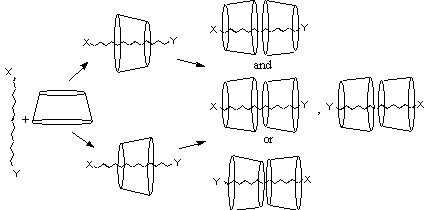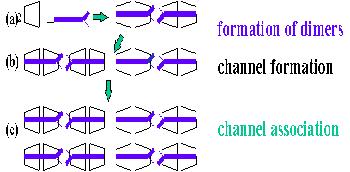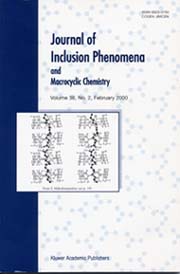Molecular Organisation and Self-Assembly
(a) Formation of [2]pseudorotaxanes and [3]pseudorotaxanes in aqueous solutions by αCD and long bifunctional guest molecules in different orientations as found by NMR spectroscopic and X-ray (J. Org. Chem 1999, 64, 6217) as well as microcalorimetry (J. Phys. Chem. 2001, B105, 2664, in collaboration with Dr. G. Nounesis, IRRP).
 |
(b) In the solid state long aliphatic mono- and dicarboxylic acids with 10-16 carbon atoms form [3]pseudorotaxanes with α and βCD in the crystalline state (J. Chem. Soc. Chem. Commun. 1998, 2133). Depending on the nature of the guest molecule the macrocycles can arrange in channels thus forming large scale ordered architectures in the crystal.
|
Fig. 6 Channels of the complex of βCD/ tridecanoic acid (Acta Crystallogr. 2000 B56, 322; Curr. Org. Chem. 2004, 8, 25)
(c) Currently this observation is used to align functional materials within the CD nanochannels.


